Honeyberry Garden Walk DIY: Ever dreamed of strolling through your own backyard, plucking sweet, juicy honeyberries straight from the bush? I know I have! There’s something incredibly satisfying about growing your own food, and honeyberries, with their unique flavor and early harvest, are a fantastic place to start. But let’s be honest, sometimes the thought of creating a beautiful and productive garden space can feel overwhelming.
For centuries, cultivating edible gardens has been a cornerstone of self-sufficiency and a connection to nature. From the ancient kitchen gardens of monasteries to the victory gardens of wartime, growing your own food has always been a way to nourish both body and soul. Now, you can continue this tradition with your own Honeyberry Garden Walk DIY project!
That’s where this DIY guide comes in. I’m going to share some simple, yet effective tricks and hacks to help you design and build a charming honeyberry garden walk, even if you’re a complete beginner. Imagine creating a beautiful pathway lined with thriving honeyberry bushes, a space that’s both functional and aesthetically pleasing. This isn’t just about growing berries; it’s about creating an experience, a little slice of paradise right outside your door. So, grab your gardening gloves, and let’s get started on your own Honeyberry Garden Walk DIY adventure!
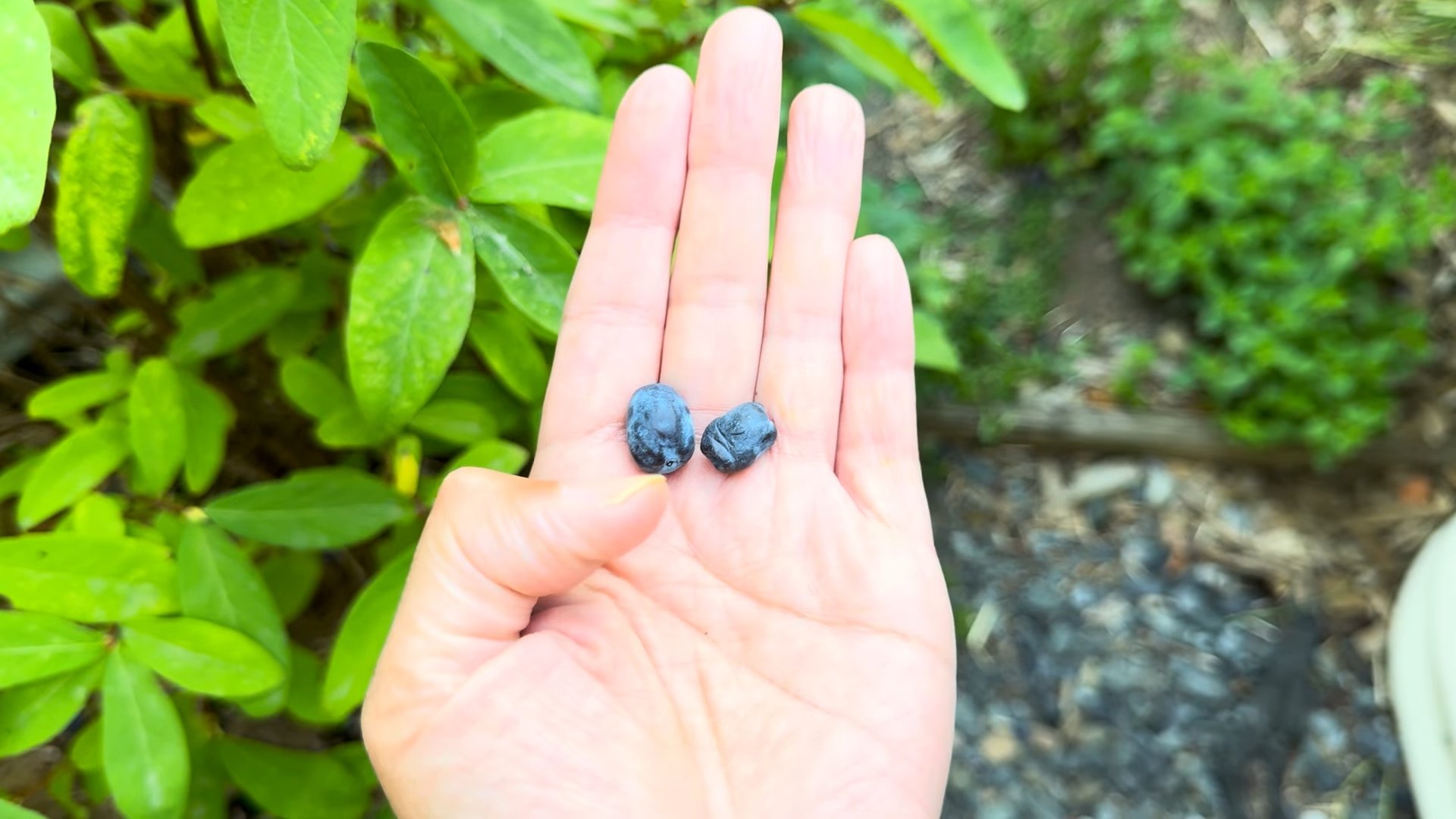
Creating Your Dream Honeyberry Garden Walkway
Okay, friends, let’s dive into building a beautiful and functional honeyberry garden walkway! I’m so excited to share this project with you because it’s not only a great way to enhance your garden’s aesthetic, but it also makes tending to your honeyberries so much easier. Plus, it’s a fantastic DIY project that you can customize to fit your own style and garden layout.
Planning and Preparation: Laying the Groundwork
Before we even think about picking up a shovel, a little planning goes a long way. This is where we decide on the look, feel, and practicality of our walkway.
* **Assess Your Garden:** Take a good look at your honeyberry patch. Where do you naturally walk? Where do you need better access for pruning, harvesting, and general maintenance? These are the areas where your walkway will be most beneficial.
* **Consider the Style:** Do you want a rustic, natural look with stepping stones? Or a more formal, defined path with pavers or gravel? Think about what complements your garden’s overall style and your personal taste. I personally love a slightly rustic look that blends seamlessly with the natural environment.
* **Measure and Map:** Once you have a general idea of the path’s route, measure the length and width. This will help you determine how much material you’ll need. I always recommend adding a little extra to account for cuts, mistakes, or future expansions.
* **Gather Your Materials:** This is where the fun begins! Here’s a list of what you’ll likely need, but remember to adjust based on your chosen style:
* **Walkway Material:** Stepping stones, pavers, gravel, mulch, wood chips – the choice is yours! For stepping stones, I like natural flagstone for its unique character. For gravel, pea gravel is a classic and affordable option.
* **Landscape Fabric:** This is crucial for preventing weeds from popping up through your walkway. Trust me, you’ll thank yourself later!
* **Edging Material (Optional):** If you want a more defined path, consider edging like plastic edging, brick, or wood.
* **Sand or Gravel Base:** This helps create a stable and level foundation for your walkway material.
* **Tools:** Shovel, rake, measuring tape, level, wheelbarrow (optional but helpful), garden gloves, tamper (for compacting the base), safety glasses.
Step-by-Step Construction: Building Your Path
Alright, let’s get our hands dirty! Follow these steps to create your honeyberry garden walkway.
1. **Mark the Path:** Use marking paint or string to outline the desired path. This will give you a visual guide as you work. I like to walk the path a few times to make sure it feels natural and comfortable.
2. **Excavate the Area:** Using a shovel, dig out the area within your marked lines. The depth will depend on your chosen materials. For stepping stones or pavers, you’ll need to dig deep enough to accommodate a layer of sand or gravel base, plus the thickness of the stone/paver, ensuring the finished surface is level with the surrounding ground. For gravel or mulch, a shallower excavation will suffice. I usually aim for a depth of about 4-6 inches for stepping stones and 2-3 inches for gravel.
3. **Compact the Soil:** Use a tamper to compact the exposed soil at the bottom of the excavated area. This will create a solid foundation and prevent settling. If you don’t have a tamper, you can use a heavy piece of wood or even your feet, but a tamper will do a much better job.
4. **Lay Landscape Fabric:** Cover the entire excavated area with landscape fabric. Overlap the edges by a few inches to prevent weeds from sneaking through. Secure the fabric with landscape staples or rocks. This step is so important for weed control!
5. **Add the Base Layer:** Pour a layer of sand or gravel into the excavated area. Spread it evenly with a rake and compact it with the tamper. This base layer will provide drainage and create a level surface for your walkway material. I usually aim for a base layer of about 2-3 inches.
6. **Install Edging (Optional):** If you’re using edging, install it now. Follow the manufacturer’s instructions for your chosen edging material. Make sure the edging is level and securely in place. Edging really helps to define the path and prevent the walkway material from spreading into the surrounding garden.
7. **Place Your Walkway Material:** Now for the fun part! Carefully place your stepping stones, pavers, gravel, or mulch onto the prepared base.
* **Stepping Stones:** Arrange the stones in a visually appealing pattern, leaving enough space between them for comfortable stepping. Use a level to ensure each stone is level and stable. You might need to add or remove sand/gravel underneath each stone to achieve a level surface. I like to vary the spacing slightly to create a more natural look.
* **Pavers:** Lay the pavers in your desired pattern, leaving small gaps between them. You can fill these gaps with sand or polymeric sand to lock the pavers in place. Use a level to ensure the pavers are level and even.
* **Gravel/Mulch:** Spread the gravel or mulch evenly over the landscape fabric, creating a smooth and consistent surface. Rake it out to your desired thickness.
8. **Fine-Tune and Adjust:** Once you’ve placed all your walkway material, take a step back and assess the overall look. Make any necessary adjustments to ensure the path is level, stable, and visually appealing. Walk the path to test its comfort and functionality.
9. **Add Finishing Touches:** Consider adding decorative elements like plants, rocks, or lighting to enhance the beauty of your walkway. I love adding small, low-growing plants along the edges of the path to soften the look and create a more natural feel.
Choosing Your Walkway Material: A Closer Look
Let’s delve a little deeper into the different walkway material options, as this is a crucial decision that will impact the overall look and feel of your garden.
* **Stepping Stones:**
* **Pros:** Natural, rustic look; allows for drainage; relatively easy to install; can be customized to fit any space.
* **Cons:** Can be uneven; may require more maintenance to keep weeds at bay; can be slippery when wet.
* **Types:** Flagstone, slate, granite, concrete. I personally love flagstone for its natural variations in color and texture.
* **Pavers:**
* **Pros:** Formal, defined look; durable; easy to maintain; wide variety of colors and styles available.
* **Cons:** Can be more expensive than other options; requires more preparation and installation effort; can look less natural.
* **Types:** Concrete pavers, brick pavers, interlocking pavers.
* **Gravel:**
* **Pros:** Affordable; easy to install; good drainage; available in a variety of colors and sizes.
* **Cons:** Can be messy; requires regular raking to keep it in place; can be uncomfortable to walk on barefoot.
* **Types:** Pea gravel, crushed stone, decomposed granite.
* **Mulch/Wood Chips:**
* **Pros:** Inexpensive; easy to install; provides nutrients to the soil; suppresses weeds.
* **Cons:** Decomposes over time and needs to be replenished; can attract insects; can be slippery when wet.
* **Types:** Wood chips, bark mulch, shredded rubber mulch.
Maintaining Your Honeyberry Garden Walkway: Keeping it Beautiful
Once your walkway is complete, a little maintenance will keep it looking its best for years to come.
* **Weed Control:** Regularly remove any weeds that pop up along the edges or between the stones/pavers. You can use a hand weeder, hoe, or even a vinegar-based weed killer.
* **Cleaning:** Sweep or hose down the walkway periodically to remove dirt, debris, and algae. For stubborn stains, you can use a pressure washer or a mild detergent.
* **Leveling:** Over time, stepping stones or pavers may settle or become uneven. Use a shovel and tamper to re-level them as needed.
* **Replenishing:** If you’re using gravel or mulch, replenish it as needed to maintain the desired thickness.
* **Edging Maintenance:** Check the edging regularly to ensure it’s still securely in place. Repair or replace any damaged sections.
Troubleshooting: Common Issues and Solutions
Even with careful planning and execution, you might encounter a few challenges along the way. Here are some common issues and how to address them:
* **Weeds Growing Through Landscape Fabric:** This usually happens if the landscape fabric is torn or not properly overlapped. Repair any tears and ensure the edges are securely fastened.
* **Walkway Material Shifting:** This can happen if the base layer is not properly compacted or if the walkway is subjected to heavy traffic. Re-compact the base layer and add more material as needed.
* **Water Pooling on the Walkway:** This indicates poor drainage. Ensure the base layer is properly sl
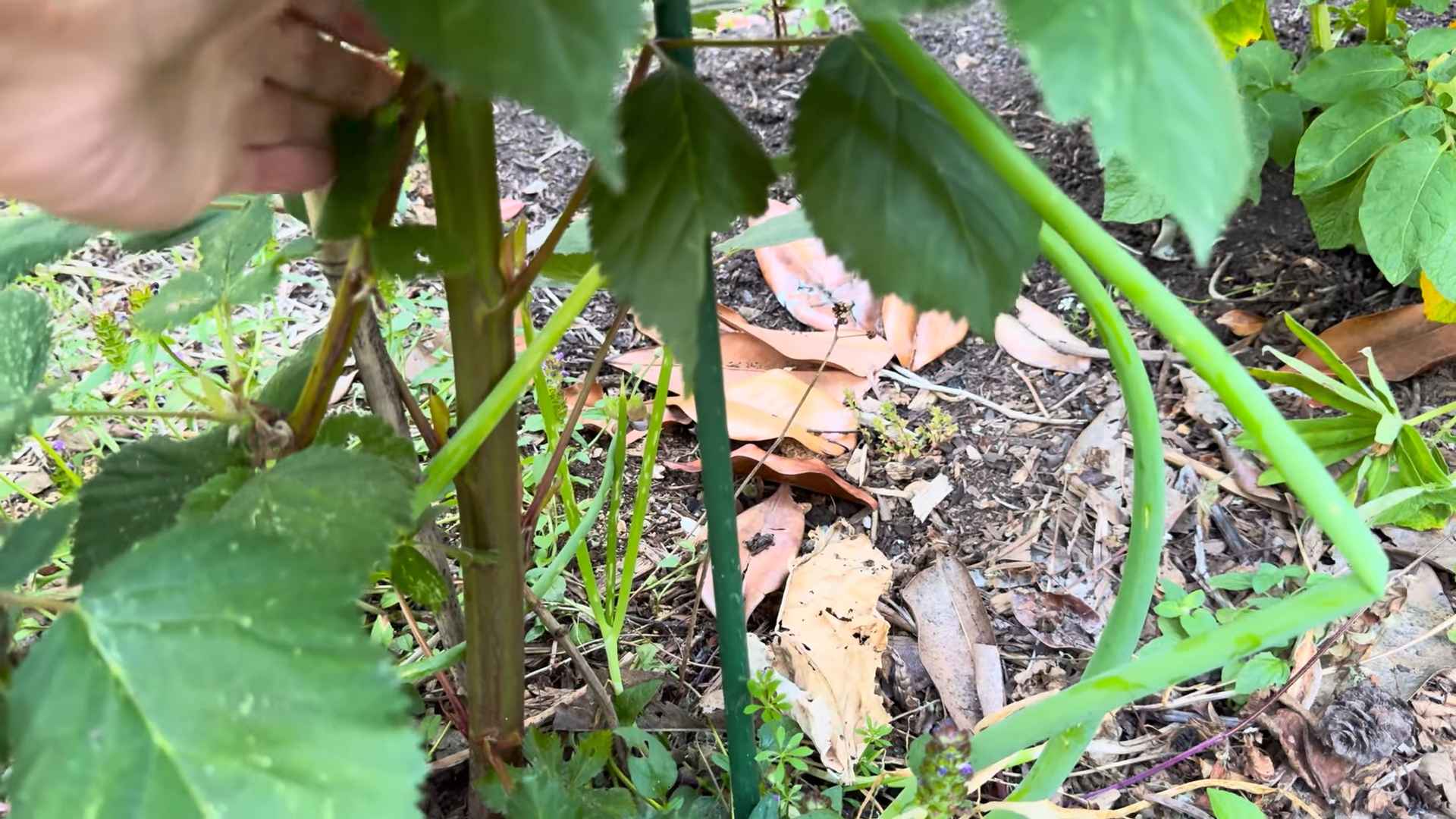
Conclusion
So, there you have it! Transforming your garden into a Honeyberry haven with this simple DIY trick is not just a project; it’s an investment in your future harvests and the overall health of your plants. We’ve walked you through the process, highlighting the benefits and offering insights to ensure your success. But why is this particular DIY approach a must-try?
Firstly, it’s about control. You’re not relying on commercially produced solutions with potentially harmful chemicals or unknown ingredients. You’re crafting a nurturing environment specifically tailored to the needs of your Honeyberries, using ingredients you trust and understand. This translates to healthier plants, more abundant yields, and a deeper connection to your garden.
Secondly, it’s about cost-effectiveness. Many of the materials required for this DIY trick are readily available in your garden or can be sourced affordably. Compared to purchasing specialized fertilizers or soil amendments, this method offers a budget-friendly alternative without compromising on quality or effectiveness.
Thirdly, it’s about sustainability. By utilizing natural resources and minimizing your reliance on synthetic products, you’re contributing to a more sustainable gardening practice. This is not just good for your Honeyberries; it’s good for the planet.
But the beauty of this DIY trick lies in its adaptability. Feel free to experiment with variations to suit your specific needs and preferences. For instance, if you have access to aged compost, incorporate it into the soil mixture for an extra boost of nutrients. Or, if you’re dealing with particularly acidic soil, consider adding a small amount of lime to balance the pH. You could even try adding coffee grounds to the soil as coffee grounds are known to be beneficial for berry plants.
Don’t be afraid to get creative and personalize the process!
And speaking of personalization, consider the specific needs of your Honeyberry varieties. Some varieties may prefer slightly different soil conditions or nutrient levels. Research your specific cultivars and adjust the DIY trick accordingly to optimize their growth and productivity.
Ultimately, this DIY trick is about empowering you to take control of your Honeyberry garden and create a thriving ecosystem that supports healthy plants and abundant harvests. It’s about fostering a deeper connection to nature and enjoying the fruits (or rather, the Honeyberries!) of your labor.
We wholeheartedly encourage you to try this DIY trick and witness the transformative effects it can have on your Honeyberry garden. Remember to document your progress, take photos, and share your experiences with us and the wider gardening community. Your insights and feedback will help us refine and improve this method, ensuring that it continues to benefit Honeyberry growers for years to come.
So, grab your gardening gloves, gather your materials, and embark on this exciting DIY adventure. Your Honeyberries will thank you for it! And who knows, you might just discover a new passion for sustainable gardening along the way. This **Honeyberry Garden Walk DIY** is more than just a project; it’s a journey towards a healthier, more productive, and more rewarding gardening experience.
Frequently Asked Questions (FAQ)
What exactly is the “Honeyberry Garden Walk DIY” trick?
The Honeyberry Garden Walk DIY trick refers to a method of improving the soil and overall growing conditions for your Honeyberry plants using readily available, natural materials. It typically involves amending the soil with organic matter, improving drainage, and providing essential nutrients to promote healthy growth and abundant fruit production. The specific steps may vary depending on your local soil conditions and the availability of materials.
What are the benefits of using this DIY trick compared to commercial fertilizers?
There are several advantages to using this DIY approach. Firstly, it allows you to control the ingredients and avoid potentially harmful chemicals found in some commercial fertilizers. Secondly, it’s often more cost-effective, as you can utilize materials already available in your garden or source them affordably. Thirdly, it promotes sustainable gardening practices by reducing your reliance on synthetic products and utilizing natural resources. Finally, it fosters a deeper connection to your garden and allows you to tailor the soil conditions to the specific needs of your Honeyberry plants.
What kind of organic matter should I use for this DIY trick?
Excellent choices for organic matter include well-rotted compost, aged manure, leaf mold, and shredded bark. Compost provides a balanced source of nutrients and improves soil structure. Aged manure adds essential minerals and promotes beneficial microbial activity. Leaf mold is a fantastic soil conditioner and helps retain moisture. Shredded bark improves drainage and aeration. Choose the organic matter that is most readily available to you and best suits your soil conditions.
How often should I apply this DIY trick to my Honeyberry plants?
The frequency of application depends on the age of your plants and the condition of your soil. For newly planted Honeyberries, it’s recommended to amend the soil at planting time and then reapply the DIY trick annually in the spring. For established plants, you can apply it every other year or as needed based on soil testing and plant health. Observe your plants closely and adjust the frequency accordingly.
Can I use this DIY trick for other berry plants besides Honeyberries?
Yes, this DIY trick can be adapted for other berry plants, such as blueberries, raspberries, and strawberries. However, you may need to adjust the specific ingredients and proportions to suit the specific needs of each type of berry. For example, blueberries prefer more acidic soil, so you may need to incorporate more acidic amendments like peat moss or sulfur. Research the specific requirements of each berry type before applying the DIY trick.
What if I don’t have access to all the recommended materials?
Don’t worry if you can’t find all the recommended materials. The key is to use what you have available and adapt the DIY trick accordingly. For example, if you don’t have aged manure, you can substitute with compost or other organic matter. If you don’t have leaf mold, you can use shredded leaves. The most important thing is to improve the soil structure and provide essential nutrients to your Honeyberry plants.
How do I know if this DIY trick is working?
You’ll know the DIY trick is working if your Honeyberry plants exhibit healthy growth, vibrant foliage, and abundant fruit production. Look for signs of strong root development, increased stem diameter, and improved overall vigor. You can also monitor the soil pH and nutrient levels to ensure they are within the optimal range for Honeyberries. Regular observation and soil testing will help you assess the effectiveness of the DIY trick.
What are some common mistakes to avoid when using this DIY trick?
One common mistake is using fresh manure, which can burn the roots of your plants. Always use aged or composted manure. Another mistake is over-fertilizing, which can lead to nutrient imbalances and plant stress. Follow the recommended proportions and avoid applying excessive amounts of any ingredient. Finally, be sure to water your plants thoroughly after applying the DIY trick to help the nutrients penetrate the soil.
How can I share my experience with this DIY trick?
We encourage you to share your experience with this DIY trick by leaving comments on our website, posting photos and videos on social media using relevant hashtags (like #HoneyberryGardenWalkDIY), or joining online gardening forums and communities. Your feedback and insights will help us refine and improve this method and benefit other Honeyberry growers. We’re excited to hear about your success stories!


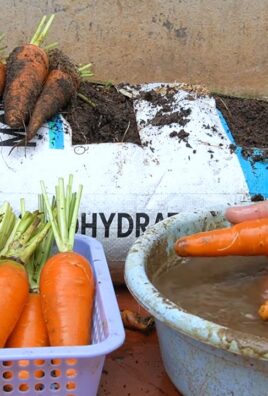
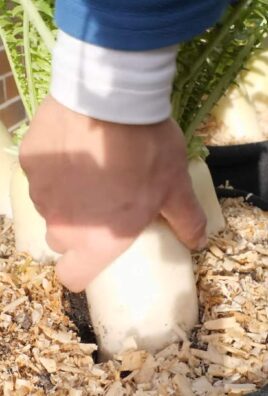
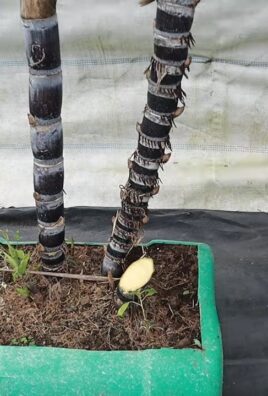
Leave a Comment